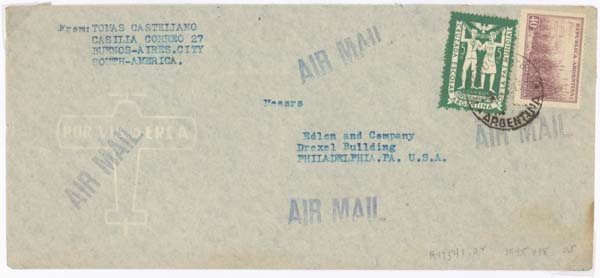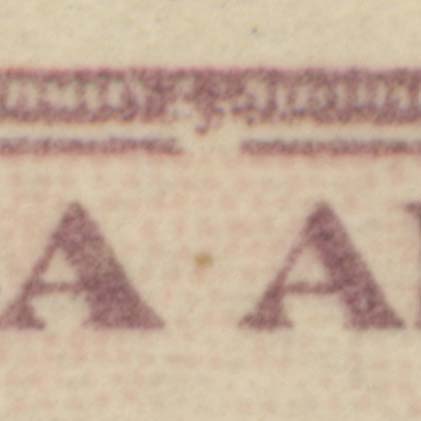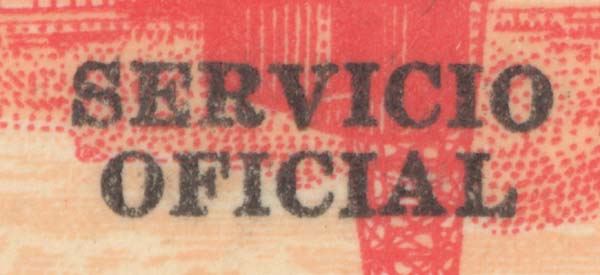The 15c Small Format Cattle on Dark Blue of 1936

The 1 peso with map borders of 1936

The 15cSC-D and 1pL can be found on 1.15 pesos airmail rates to North America and Europe.

The first rule of this series, which has been verified 100 percent, is that all stamps used in 1935 and 1936 are on the 1E1 paper. This paper is cream in color, of medium thickness, has a yellowish gum, and has a ondulating rays watermark with symmetric mesh
In all, there are 24 1E1 regular issue stamps:
1/2c, 1c, 2c, 3cSMGr (San Martin Green), 4cGy (Gray), 5c (offset), 6c, 10cR (types I, II, and III), 12cBR (Brown) 15cSC, 20cJMG (Juan Martin Guemes), 20cMG-L (Martin Guemes Light Blue), 25c, 30c, 40c, 50c, 1pL (with limits), 1p (without limits), 2p, 5p, 10p, and 20p.
There are philatelic covers with the low, or 'cents' values from October 1935, and these contain the complete low range for the 1E1, except for the later types of the 10c Rivadavia Red (types II and III).

The 1E1 high values are generally rare. Any of the large format stamps on a cover with the 1pL from 1936 is guaranteed to be 1E1, such as the 30c and 2 pesos stamps shown here.


One thing worth noting is that all 2 pesos stamps until 1945/46 have a deep burgundy frame color that is not found on any of the later printings.






















